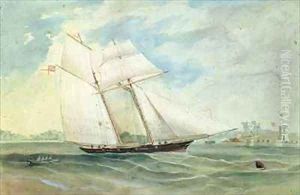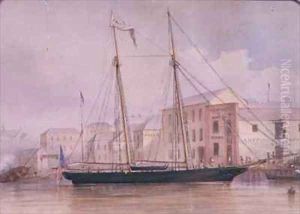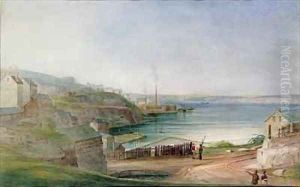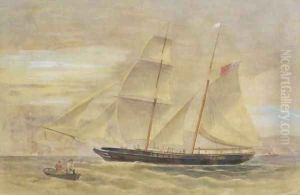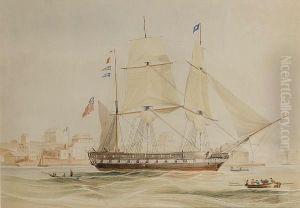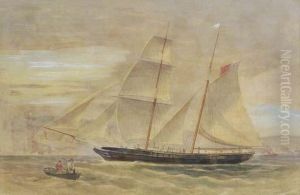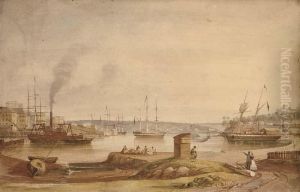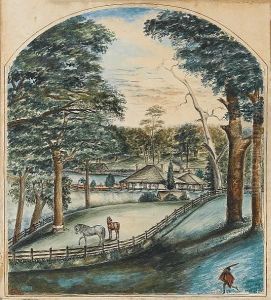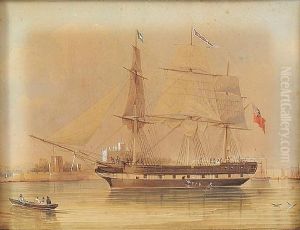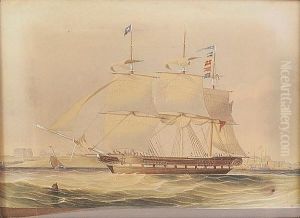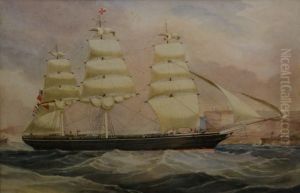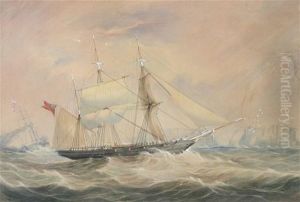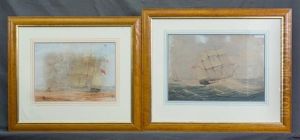Frederick Garling Paintings
Frederick Garling was an English-born artist known for his work as a colonial painter in Australia. Born on May 7, 1806, in London, England, Garling was the son of Frederick Garling Sr., a customs officer. The family emigrated to Australia in 1815, where Garling Sr. was appointed as an inspector of spirits and tobacco in Sydney, playing a significant role in the young colony's administration.
Garling's artistic journey began under the influence of his new environment in Australia. Although there is little formal documentation about his artistic training, it is believed that he was largely self-taught, drawing inspiration from the natural beauty and burgeoning colonial life around him. He developed a keen interest in maritime scenes, which became a central theme in his work. His paintings and drawings offer a valuable visual record of early colonial Australia, including landscapes, seascapes, and portraits of significant colonial figures.
Throughout his career, Garling was engaged in various occupations, including working for the Customs Department like his father, which might have influenced his frequent choice of maritime subjects. Despite his other professional engagements, he pursued his passion for art and continued to paint, capturing the transformative period of Australian history with his brush.
Garling's works were appreciated during his lifetime, and he participated in several exhibitions, including the first exhibition of the Society for the Promotion of the Fine Arts in Australia in 1847. His art provides insight into the Australian colonial era, depicting ships, harbors, and the early settlements that were crucial to the development of the nation.
Frederick Garling passed away on December 3, 1873, in Sydney, Australia. Today, his works are held in high regard and can be found in major Australian collections, including the National Library of Australia, the State Library of New South Wales, and the National Gallery of Australia, serving as a testament to his contribution to the visual history of Australia. His legacy is that of a pioneering artist who captured the essence of colonial Australia, making significant contributions to the country's cultural and historical heritage.
